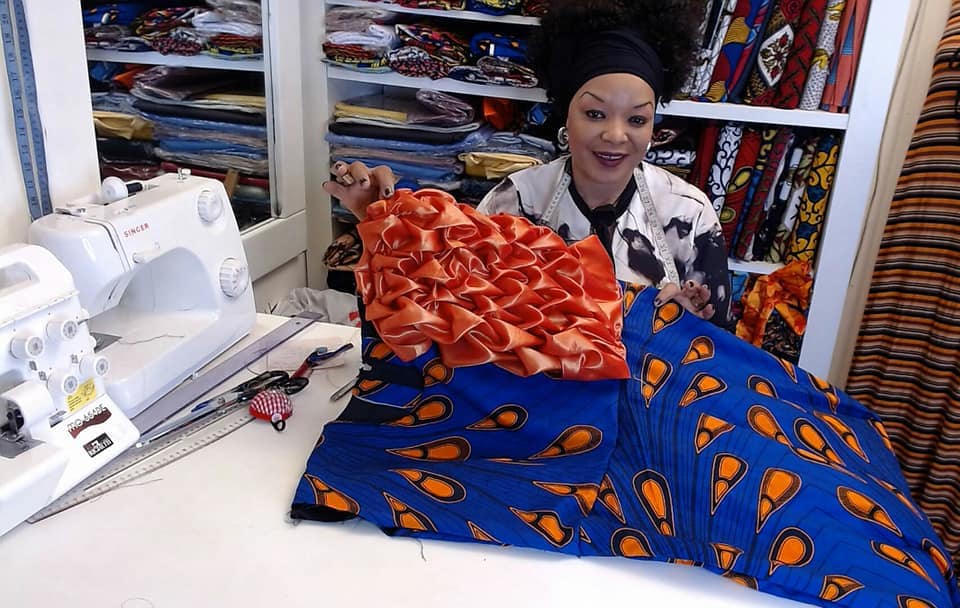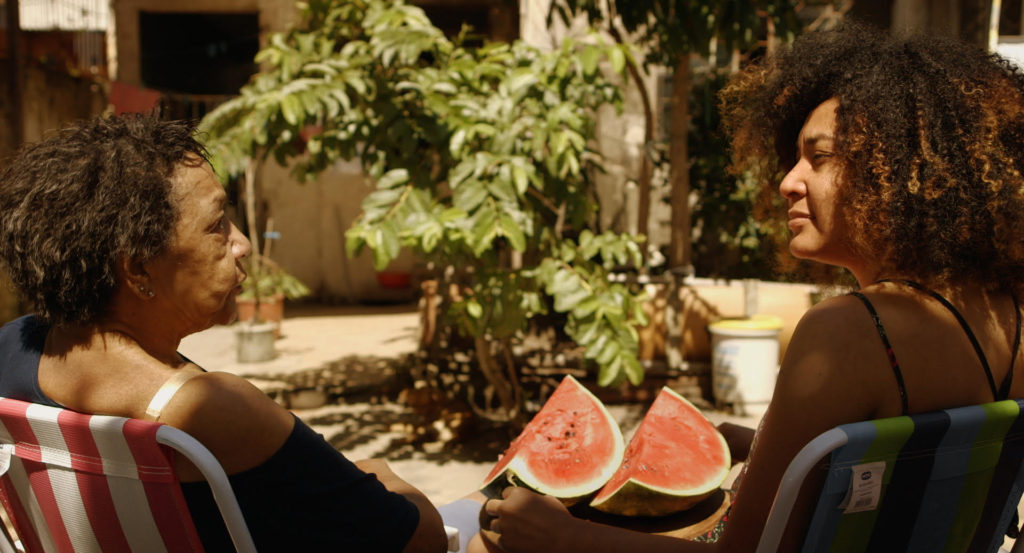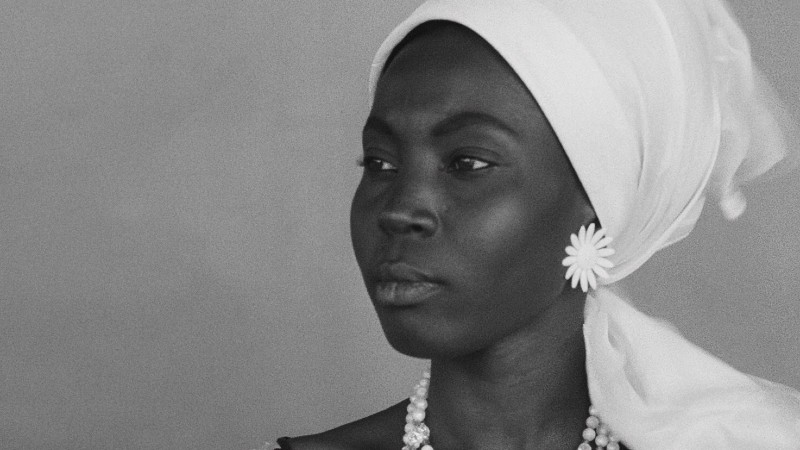Touring Scotland and culminating in the Edinburgh Art Festival 2025, SEEDLINGS: Diasporic Imaginaries brings together artists who use the seed as a means to explore ecology, migration, and the environment. Curator Jelena Sofronijevic reflects on how the exhibition challenges colonial divides between nature and culture, reimagining place, time, and belonging through diverse contemporary practices.
Written by Jelena Sofronijevic/Image: Kinnomic Botany by Iman Datoo, Film Still, 2022. Image courtesy of the artist
Terms like ‘native’ and ‘invasive’, ‘indigenous’, and ‘dispersal’ have long been constructed and used to describe ‘other’ beings. As humans, we are fundamentally inseparable from our environments, and exist in relation to more-than-human beings and lands. These ecologies, however, have been threatened by those who have perpetuated our species’ detachment from plants, animals, and landscapes, in part in the pursuit of exploiting natural resources.
These issues were central to Invasion Ecology (2024), an exhibition and public programme I co-curated on behalf of Radical Ecology, with Vashti Cassinelli at Southcombe Barn on Dartmoor. Implicit within that exhibition were the ways in which ideas of home, identity, and belonging might change in the context of diasporas. Like the terms mentioned above, the root of the word ‘diaspora’ can be found in the natural sciences. Meaning ‘to sow over’ or ‘scatter’, it encourages us to reflect on our movements, migrations, and relations across lands, again, challenging binaries such as human/nature. Moving from an exhibition so deeply rooted in its place, in South West England, to a model that could migrate was an opportunity to explore both grounded and imagined connections between individuals and communities in different contexts.
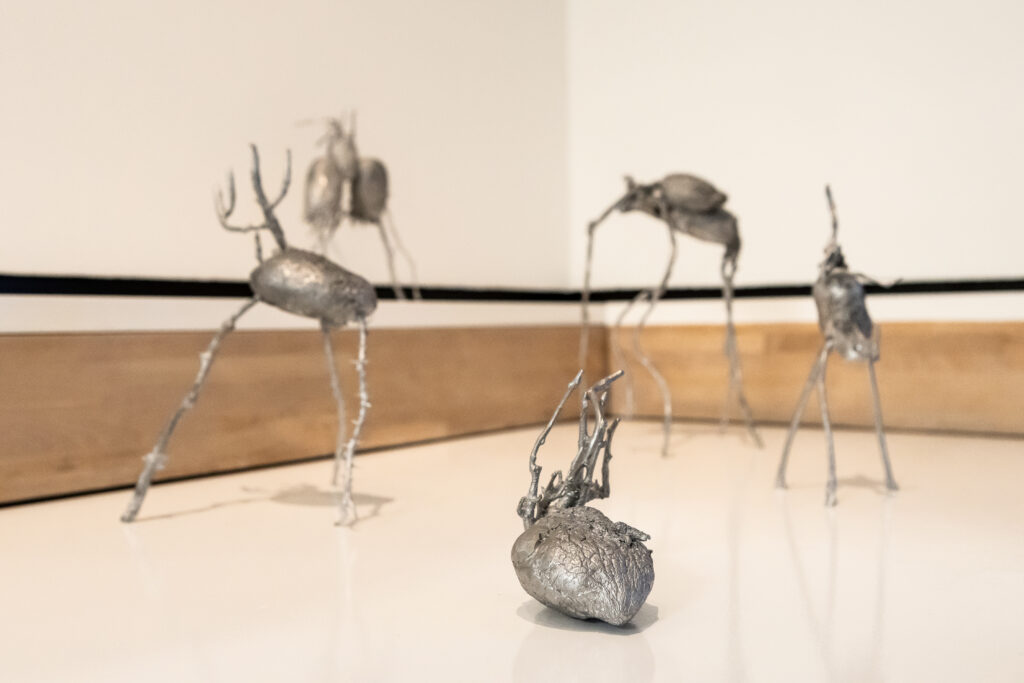
SEEDLINGS: Diasporic Imaginaries (2025) is a group exhibition with Travelling Gallery in Scotland, exploring ways to connect with our worlds through other-than-human perspectives. Challenging the boundaries between culture and nature, the exhibition looks to destabilise colonial systems, categories, and hierarchies that tend to favour scientific theory and marginalise ancestral knowledges and indigenous cosmologies. Featuring work by artists Emii Alrai, Iman Datoo, Remi Jabłecki, Radovan Kraguly, Zeljko Kujundzic, Leo Robinson, and Amba Sayal-Bennett, the exhibition brings together a variety of contemporary artistic practices, including drawing, printmaking, sculpture and film, that reimagine our collective understandings and visions of places and times.
Common across the works in the exhibition is the use of the seed as a means to think about and connect themes concerning ecologies, environments, and migration. For some, the seed represents a world of its own, a self-contained body or cell, capable of crossing borders. For others, it serves as a starting point for alternative possibilities and ways of being. Many of the artists have researched specific seeds in their ‘native’ soils, and after being displaced, in banks and libraries. The potato is offered as an incidental ‘root’ to many of their works. In the film, Kinnomic Botany (2022), Iman Datoo draws upon research in the Commonwealth Potato Collection at the James Hutton Institute near Dundee, the UK’s largest collection of potato seeds, to challenge dominant taxonomies or ways of classifying lives.
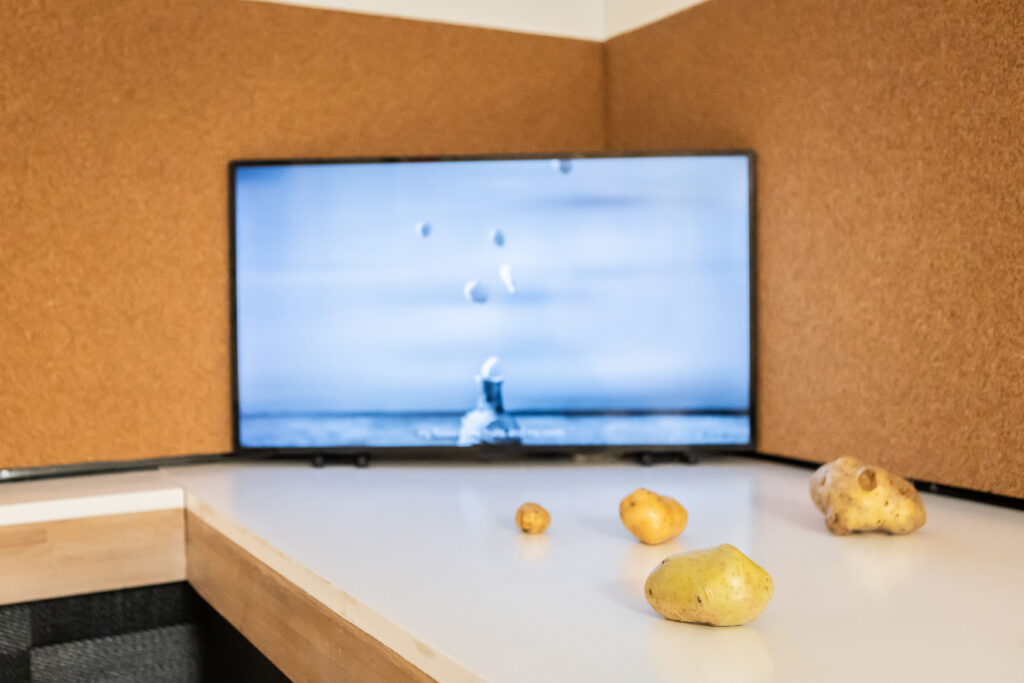
More speculative connections can be made between Remi Jabłecki and Radovan Kraguly’s practices. The former’s futuristic sculptures remind us of the otherworldly, even alien qualities of these most earthly and everyday British crops, with the artist using them as a means to think about transformation and personal growth. Kraguly’s prints, though as detailed as scientific and botanical illustrations, are similarly cosmic, avoiding categorisation in their ambiguous representations and titles. Reflecting on relations of control between humans and nature, his works also illustrate the role of different pastoral and agricultural environments in the formation of the artist’s own identity and early adoption of ‘climate politics’, connecting his formative experiences growing up on a farm in the former Yugoslavia, to his later practice in rural Wales.
Amba Sayal-Bennett’s architectural sculptures also converse with Jabłecki’s rebellious forms and the transplantation of Kraguly’s practice. Kern (2024) and Phlo (2024) are part of the artist’s investigations into rubber, a commodity once so highly demanded that its value surpassed that of silver. In a mission facilitated by the British government, Henry Wickham stole and trafficked 70,000 rubber seeds from the Amazon rainforest in Brazil in 1876. Transported to Kew Gardens in London, they were then dispersed to British colonies for cultivation. Its plural uses and potential for profit led to its proliferation across the globe – yet the soil in India refused to accept the seeds, which the artist presents as a form of environmental resistance to the colonial project.
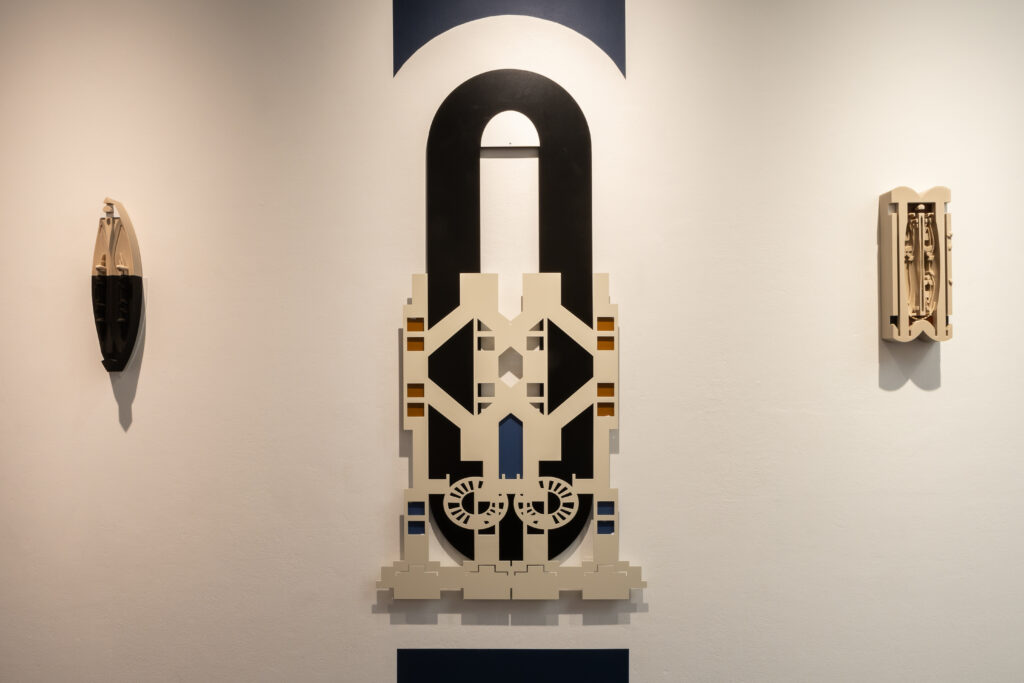
Artist Emii Alrai, by contrast, focuses on excavation, exploring archaeology, Western museological structures, and the complex process of ruination. Both Amba and Emii practice across scales, ranging from large-scale sculpture and installation to drawing works on paper, reflecting the plurality of their practices and the intimate, personal nature of these concerns.
Scotland has proven to be fertile land for many of these artists’ practices; yet, for some, SEEDLINGS presents the first opportunity to experience their works in this context.
Born in Subotica, Yugoslavia (now Serbia), Zeljko Kujundzic lived and worked in Edinburgh between 1948 and 1958, before moving with his partner and frequent collaborator, Ann, and their children, to British Columbia (BC). His developed, complex work in ceramic sculpture, often featuring the thunderbird, a mythological bird-like spirit widespread in North American indigenous and First Nation cultures and storytelling, is deeply rooted in these early experiences. Yet his part in Edinburgh’s growing artistic community, and work with artists and writers like Ian Hamilton Finlay, Nannie Katharin Wells, Bernard Leach, and Joan Faithfull, has, thus far, been walked over in more conventional art histories. A selection of archive materials concerning his invention of the solar kiln, unearthed from public and private collections across the UK and Canada, is presented here for the first time.
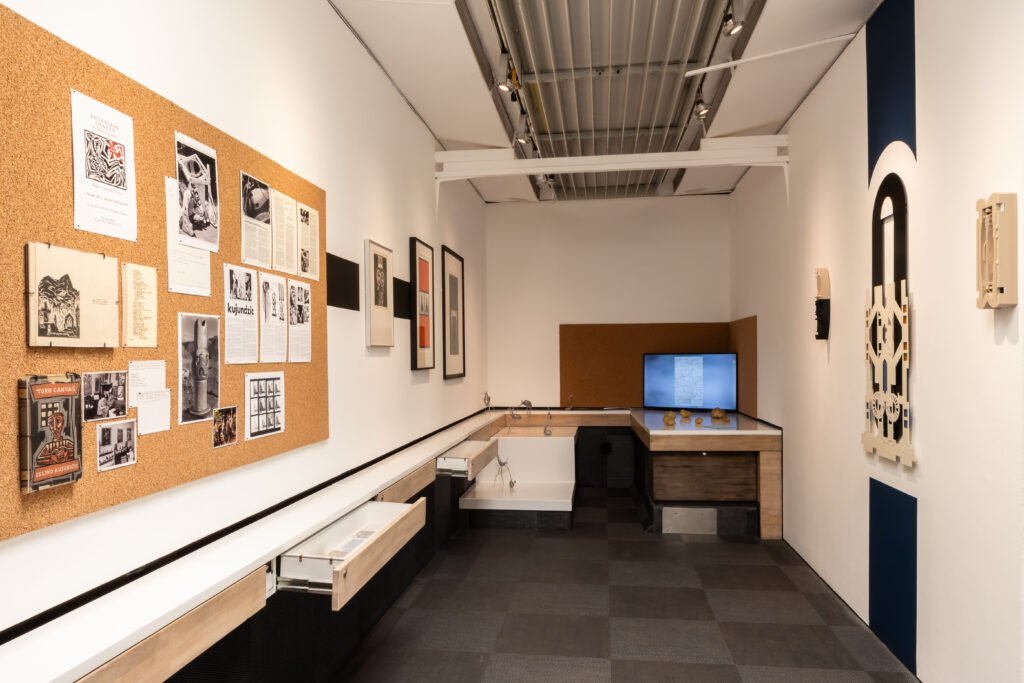
This is but one instance where the exhibition seeks to germinate future research – itself a SEEDLING, planted in Scotland, from which more will grow.
SEEDLINGS: Diasporic Imaginaries is on view at Travelling Gallery throughout Scotland, culminating at Edinburgh Art Festival (EAF) in August 2025. It is accompanied by a series of social media interventions, highlighting the artists’ connections to the places on the tour, as well as a number of talks, tours, and workshops, including with artist Leo Robinson. See online and in the space for further information.
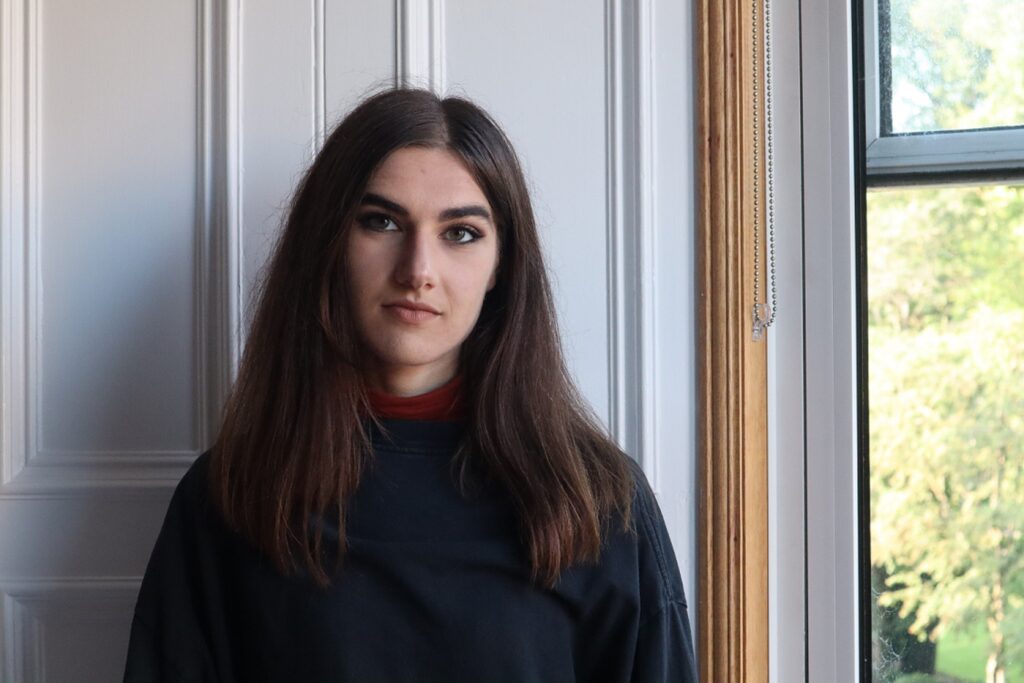
Jelena Sofronijevic (@empirelinespodcast) is a producer, curator, writer, and researcher, working at the intersections of cultural history, politics, and the arts. Their independent curatorial projects include Invasion Ecology (2024), SEEDLINGS: Diasporic Imaginaries (2025), and Can We Stop Killing Each Other? at the Sainsbury Centre (2025), and they produce EMPIRE LINES, a podcast which uncovers the unexpected flows of empires through art. They are also pursuing a practice-based PhD with Gray’s School of Art, curating exhibitions of Balkan and Yugoslavian/diasporic artists in British art collections.
Jelena’s full portfolio is available on their website and Instagram.

